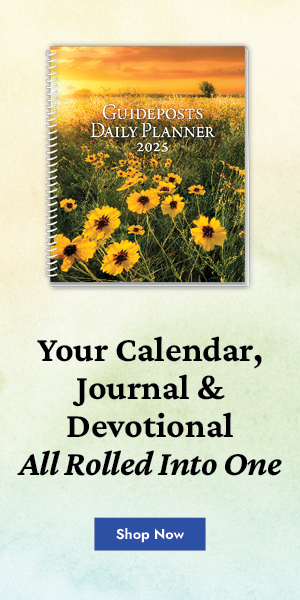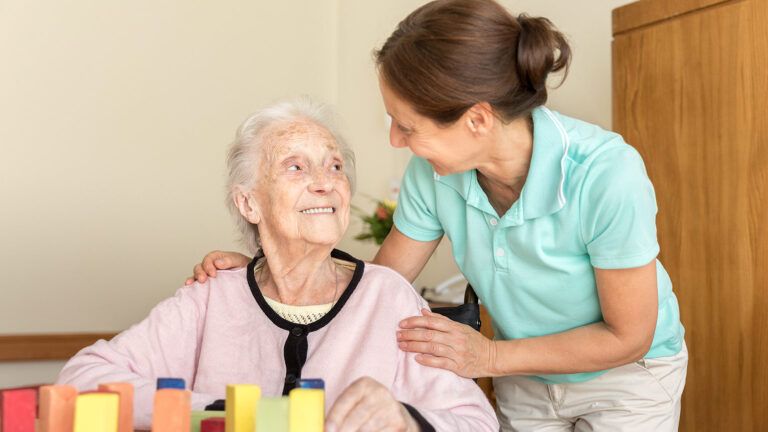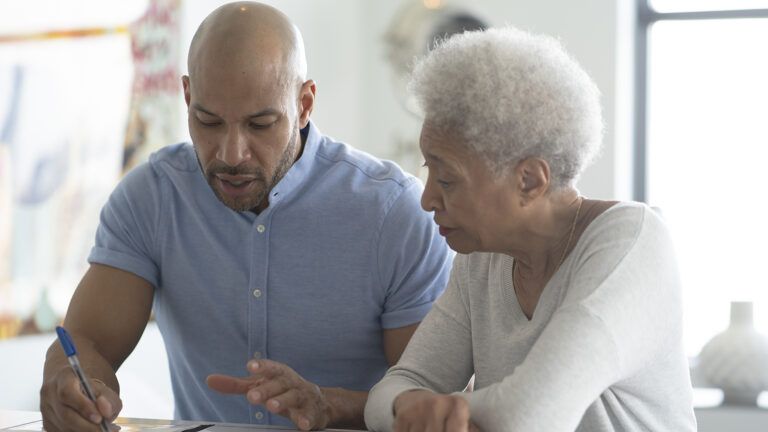Julie Hayes is the Content Manager at Benjamin Rose Institute on Aging.
You keep a watchful eye on what may feel like every aspect of your loved one’s daily life, in order to keep him or her healthy and safe. You carefully dispense pills, prepare nutritious meals, make and keep doctor’s appointments and create opportunities for exercise and socializing. But one very important area can be trickier to keep a handle on: recognizing the signs of possible elder abuse, as well as the risk factors involved. Gaining an understanding of this issue is one of the most beneficial things you can do for your loved one.
According to the National Council on Aging, approximately one in ten Americans aged 60 or older have experienced some form of elder abuse. Their abusers may be people who are close to them, whether they are caregivers, relatives or medical personnel. They may also be total strangers. In some cases, older adults can even cause themselves harm through self-neglect. The good news is that you can take measures to prevent elder abuse once you learn how to spot its red flags and risks, and if your loved one has already been victimized, you can report the abuse to the appropriate authorities.
Understanding Elder Abuse
The Centers for Disease Control and Prevention defines elder abuse as “an intentional act, or failure to act, by a caregiver or another person in a relationship involving an expectation of trust that causes or creates a risk of harm to an older adult” aged 60 or older. Various types of elder abuse include:
- Physical, emotional, psychological or sexual abuse
- Financial exploitation
- Neglect, which involves a caregiver failing to attend to an older adult’s needs, whether medical, hygienic, nutritional, dietary, financial or emotional
- Self-neglect, which involves an older adult failing to attend to his or her own physical, psychological or social needs
What Are The Risk Factors?
Any older adult can be a victim of elder abuse, but certain risk factors can make some more vulnerable than others. In 2001, a team including Benjamin Rose Institute on Aging’s Dr. Farida Kassim Ejaz and Dr. David Bass developed a Risk of Abuse tool, which identified factors for abuse commonly associated with older adults. According to this research, older adults may be at higher risk for abuse if:
- They have a history of experiencing abuse or abusing others
- They are experiencing relationship problems, such as coercive, manipulative or possessive relationships, or relationships with strict gender roles or unrealistic expectations
- They lack support or have low socioeconomic status
- They live in an environment that presents safety risks such as a dangerous neighborhood, a home with hazardous conditions, or a home with access to weapons
- They are experiencing physical, emotional or mental health-related problems. These can include:
- Trauma
- Behavioral problems
- Cognitive or physical impairments or disabilities
- Alcohol, drug or medication dependency (Ejaz, F. K., Rose, M., & Anetzberger, G. (2017). Development and implementation of online training modules on abuse, neglect, and exploitation. Journal of Elder Abuse & Neglect, 29(2–3), 73–101).
Warning Signs of Elder Abuse
Your loved one may be comfortable talking about possible abuse with you. On the other hand, he or she may have trouble discussing it, out of a sense of shame or fear. When the person is not forthcoming, it can help to know how to spot some of the signs of abuse yourself.
Red flags of neglect or self-neglect may include:
- Lack of medical aids and necessities
- Lack of basic hygiene, food or clean clothing
- Lack of care or supervision for someone who has dementia or is bedridden
- A home with inadequate heating, cooling or electricity
- A cluttered or dirty home with potential fire or safety hazards
Red flags of emotional, physical or sexual abuse may include:
- Sudden changes in behavior
- Withdrawal or social isolation
- Unexplained fractures, bruises, sores, welts, cuts or burns
- Closeness to someone who is demeaning, controlling or aggressive
Red flags of financial abuse may include:
- Unexplained financial or property transfers
- Lack of funds available for necessities the older person should be able to afford
- Unexplained purchases of expensive items or gifts
Where to Report Elder Abuse
If you know or suspect that your loved one is a victim of elder abuse, you should make a report to Adult Protective Services (APS). To locate contact information for your state, go to the National Adult Protective Services Association website.
If you have concerns that your loved one may be at high risk, the Cuyahoga County Division of Senior and Adult Services recommends that you check on him or her regularly to make sure that there is necessary support in place and that the living environment is comfortable and safe. It is a good idea also to communicate any concerns you have to your loved one’s physician, who may then keep an eye out for potential signs of abuse during visits.
What Can I Do to Help Prevent Elder Abuse?
An effective way to prevent elder abuse on a global scale is by spreading awareness and advocating for older adults. The Ageless Alliance is a national non-profit organization which unites advocates of all ages to take a stand against elder abuse through awareness, advocacy and action. The organization is free to join and offers resources to get involved in the fight to eliminate elder abuse.





